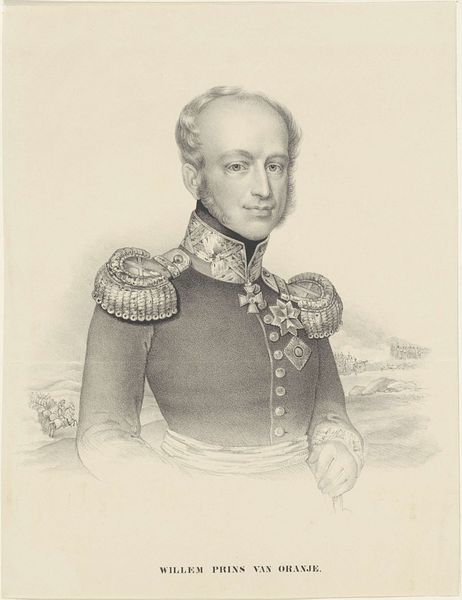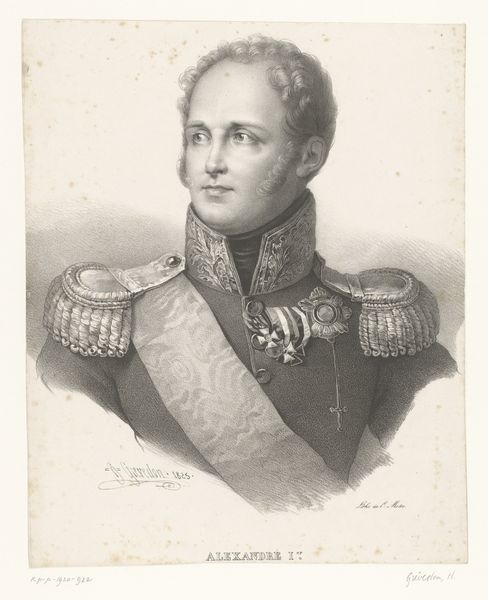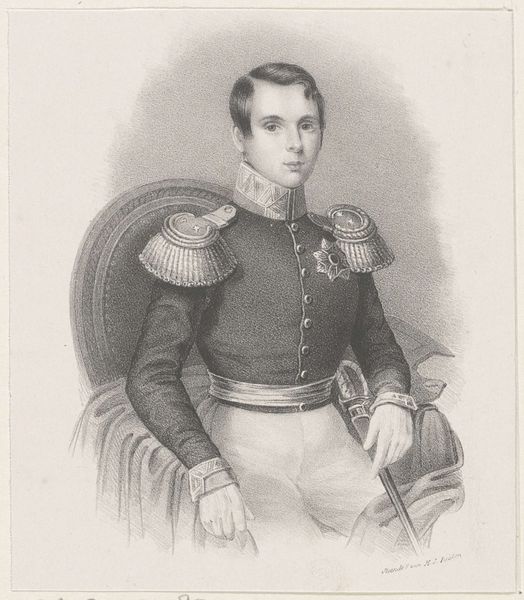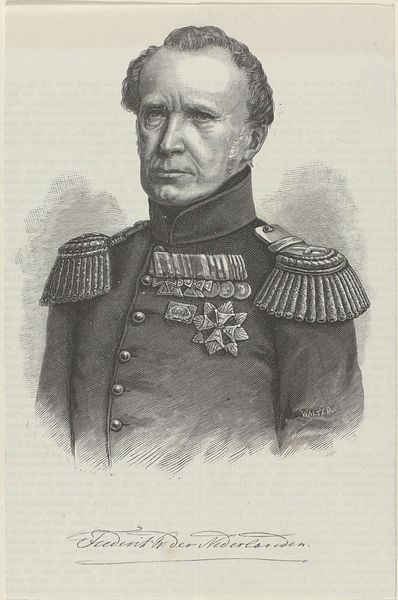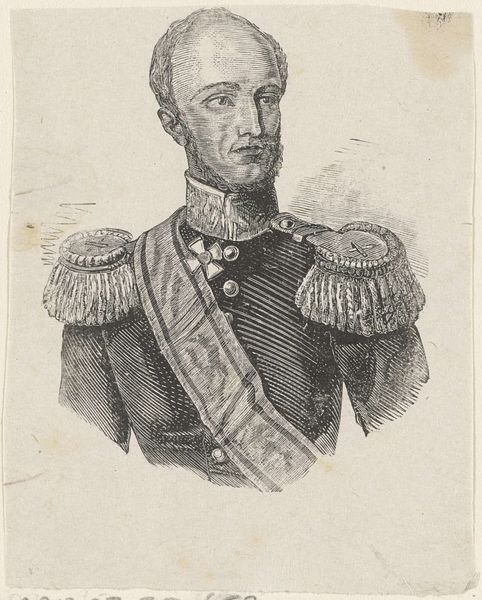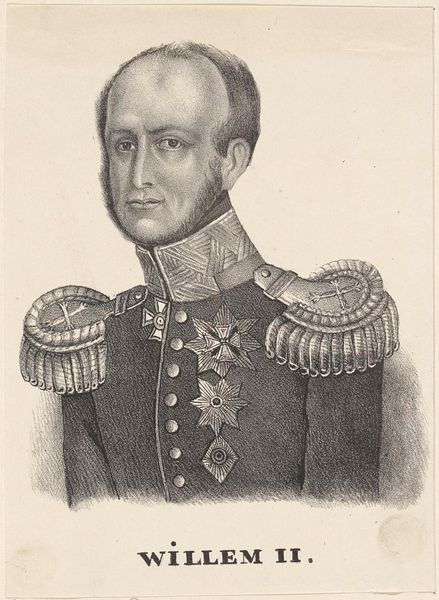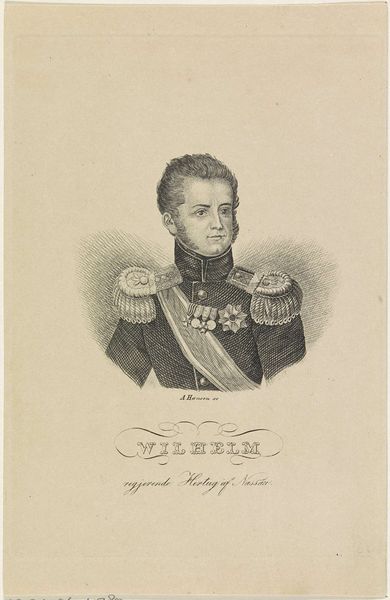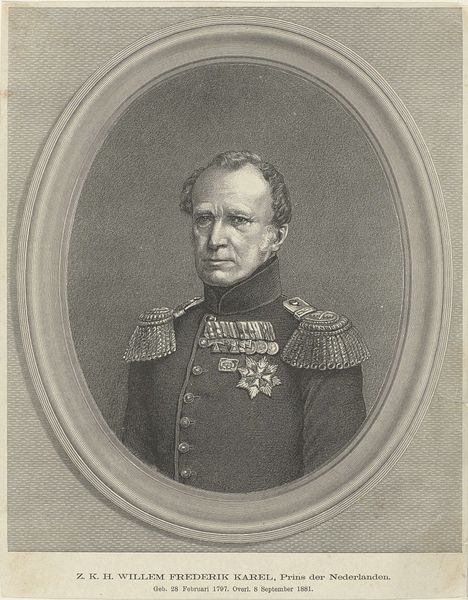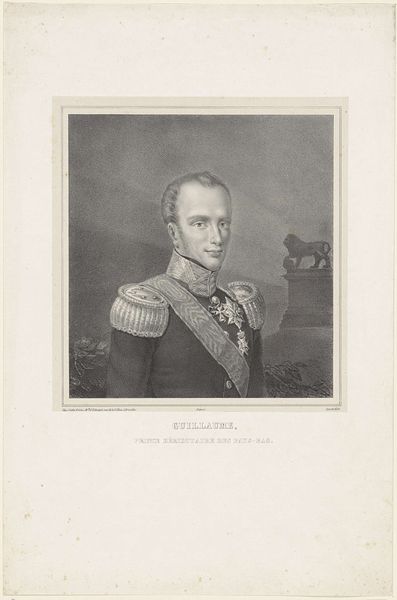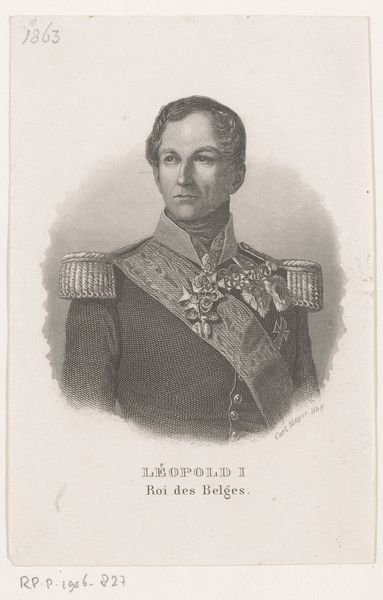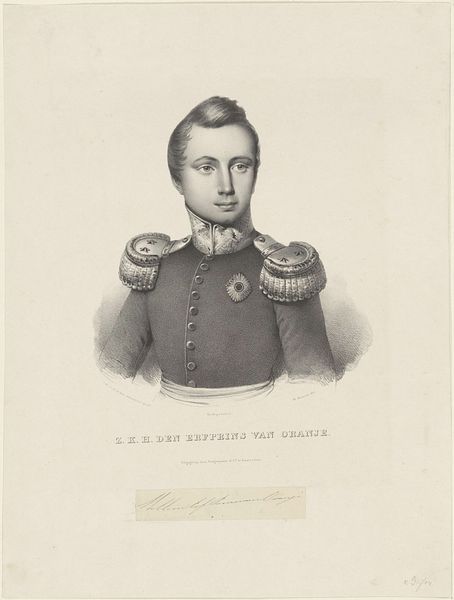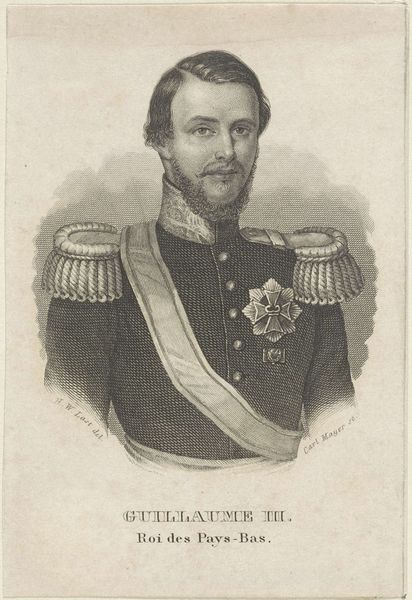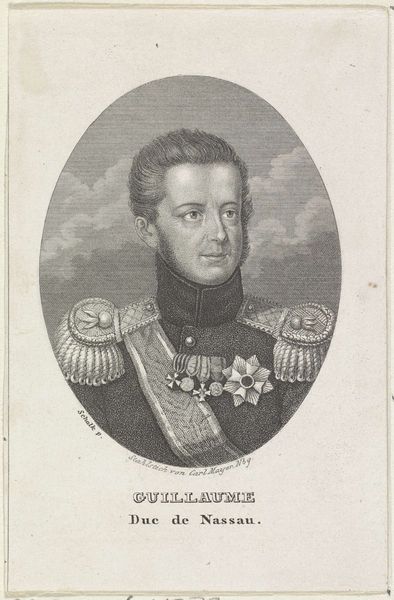
Dimensions: height 270 mm, width 219 mm
Copyright: Rijks Museum: Open Domain
Curator: What we have here is a drawing, likely from the 19th century, entitled "Portret van Frederik, prins der Nederlanden," attributed to an anonymous artist. It’s a graphite and pen portrait of Prince Frederick of the Netherlands. Editor: My initial reaction is the man looks rather stern, yet there's a slight melancholy in his eyes, almost as if he's burdened by the weight of his position. Also, that hair—quite a feat of styling for any era! Curator: Indeed. Portraits like these were important for projecting an image of power and authority, fitting with the Romantic ideals of the time. The precision and detail achieved with graphite and pen speak to the conventions of academic art prevalent during that period. Consider the history-painting thematic influence, especially as the artwork attempts to capture and frame a historical figure. Editor: Power for sure! Look at the ornate military garb and the medals practically screaming “importance!” Though there is an almost ghostly, ethereal quality achieved by using graphite and pen; he looks substantive and fleeting at the same time, as though the artist is playing with what is seen and unseen. Curator: The uniform is indicative of Frederick's military role, and the medals symbolize his achievements and status within the Dutch aristocracy. These types of depictions cemented social hierarchies and communicated a specific message to the public. Editor: All of that ornamentation, although exquisite, does set him apart, doesn’t it? And while there’s undeniably incredible artistry and meticulousness to its creation, I feel distanced. He exists on that paper and in that moment as someone separate and inaccessible. Curator: Precisely! The image operates as a public declaration rather than an intimate revelation. Now we might question, what role do such depictions play in crafting national identity, and what impact do these crafted images have on how history is both understood and perceived? Editor: In other words, can art lie? Very easily. Well, examining this portrait today, perhaps we can remind ourselves that the person isn’t exactly the persona… I might think differently about my encounters, moving forward!
Comments
No comments
Be the first to comment and join the conversation on the ultimate creative platform.
